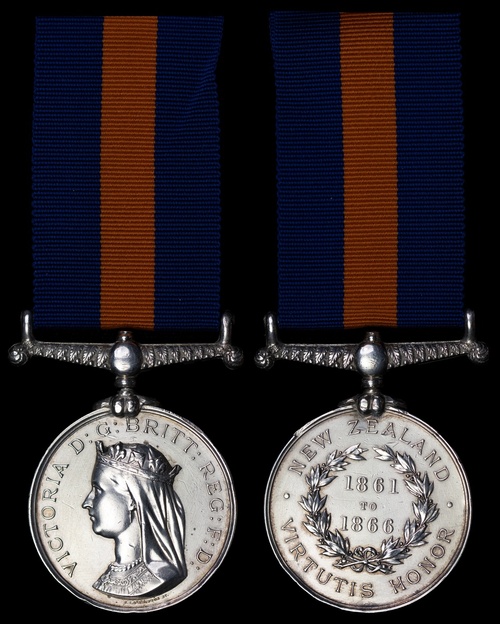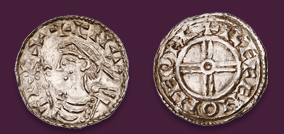
Auction: 24113 - Orders, Decorations and Medals - e-Auction
Lot: 36
New Zealand 1845-66, reverse dated '1861 to 1866' (1083 Thos. Keating, 2nd Bn. 14th Regt.), edge bruising with edge knocks, otherwise very fine
On 8 September 1860, Headquarters and five companies of the 2nd Battalion proceeded by rail from Curragh to Cork and embarked aboard the Robert Lowe for New Zealand, arriving at Auckland on 29 November 1860.
On 14 January, Major-General Thomas Pratt's force marched from Waitara towards Huirangi. They came under heavy fire from the Maoris who had manned their rifle pits and trenches between Kairau and Huirangi. For the 14th Regiment, it was the first of six significant engagements, including two attacks on the Redoubts at Huirangi, an engagement at Brooklands on 3 March, and two further engagements at Pratt's Long Sap at Te Arei.
A ceasefire was agreed on 19 March 1861, but not before the British had suffered approximately 50 killed and 130 wounded, together with further militia casualties. In December 1861, the 14th Foot moved to Pokeno where they began to construct a military road to Drury.
The conflict was reignited in late April 1863, fuelled by lingering Maori resentment over land sales at Waitara, government delays, a large scale land confiscation policy, and the rise of the Hauhau movement - which was strongly opposed to the alienation of Maori land and eager to strengthen Maori identity. On 17 July 1863, Lieutenant-Colonel C. W. Austin, in Command of the Koheroe Camp, attacked the Maori forces which were building in numbers and firing upon incoming reinforcements of the 12th and 70th Regiments. The 14th Regiment suffered three killed and eight wounded, whilst the Commanding Officer himself was wounded leading from the front.
The 14th Regiment marched to Otahuhu on 23 May 1864 and then made their way to Napier. On 22 November the regiment moved from Napier to Auckland aboard H.M.S. Falcon, where they rejoined No. 7 Company. For the unit there would be further conflict at Waikoko, but eventually, on 15 October 1866, the men were pulled out and No's 3, 4 and 7 Companies embarked on the Siam for Hobart, Australia.
Thomas Keating volunteered for the 2/18th Royal Irish Regiment at Melbourne, Australia after serving in New Zealand; sold together with copied research.
Subject to 20% VAT on Buyer’s Premium. For more information please view Terms and Conditions for Buyers.
Sold for
£380
Starting price
£180




